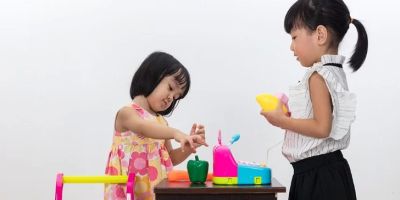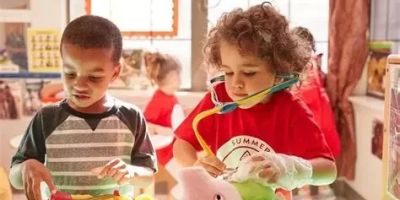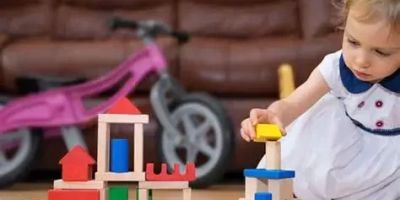1. Start with Excitement and Curiosity
As a parent, I’ve always found that introducing new toys to my child’s collection can be both a fun and overwhelming experience. The key is to start with excitement and curiosity. Children are naturally curious, so when I bring in a new toy, I try to get them excited about it first. I’ll often open the box with them and show them how the toy works. For example, when I bought a new puzzle for my little one, I let them try to piece it together with my help. Seeing their excitement grow as they realized they could solve it was a rewarding experience. Creating a sense of wonder is a great way to kickstart the toy’s introduction.
2. Let the New Toy Be Part of Their Routine
Once the excitement has died down, I’ve found that the next step is to make the new toy a regular part of their daily routine. Children thrive on routine, and introducing a new toy within that context helps them feel comfortable. For example, I let my child play with the new toy during certain times of the day, such as right after lunch or before bedtime. This helps establish a sense of continuity. I’ve noticed that when toys become part of the everyday rhythm, my child’s attachment to them grows naturally. They will soon begin to develop their own preferences and creative ways of playing with the toy.
3. Give Them Time to Explore Alone
Another valuable tip I’ve learned is to give my child time to explore the new toy alone. Sometimes, as parents, we want to guide our children’s play, but I’ve found that giving them the space to explore independently is just as important. For example, when I gave my daughter a set of building blocks, I didn’t intervene right away. Instead, I observed her as she stacked, sorted, and created. This independent exploration allowed her to form a personal connection with the toy. It also sparked her creativity and problem-solving skills. Allowing some alone time with new toys encourages children to develop their imagination and confidence in play.
4. Encourage Creative Play and Storytelling
When introducing new toys, I also try to encourage creative play and storytelling. For instance, when we bought a toy kitchen set, I didn’t just show my child how to use it— I asked them to imagine they were cooking a meal for a family or running a restaurant. Encouraging storytelling brings toys to life and enhances their appeal. It’s fascinating to see how children’s imaginations take the toys and transform them into entirely different worlds. The storytelling element can help deepen the bond your child has with their new toys and allow for endless variations of play. Plus, it’s a fun way to spend time together!
5. Set Limits and Help with Transitions
Introducing new toys can sometimes be challenging when there are already a lot of toys in the collection. One challenge I’ve encountered is managing the number of toys. It’s important to balance the introduction of new toys with the need to keep the play area manageable. I’ve found that it helps to occasionally declutter and rotate toys in and out of the collection. For example, when my child received a new stuffed animal, I temporarily stored some older toys. This way, they didn’t feel overwhelmed, and it kept their play space organized. I also helped my child transition from an old favorite to a new toy by allowing them to have both toys together for a period before deciding which to keep out in regular play.
6. Introduce New Toys Slowly
As a parent, I’ve learned that introducing too many new toys at once can lead to confusion or disinterest. Instead, I prefer to introduce new toys slowly, allowing my child time to get used to each one before moving on to the next. For instance, instead of gifting a bundle of toys all at once, I typically space out the gifts over a few days or weeks. This not only keeps the excitement fresh but also allows my child to develop a stronger bond with each toy. A slow introduction helps children appreciate the new additions to their collection and avoid toy fatigue.
7. Make the New Toy a Social Activity
Social play is an essential part of childhood development. When introducing new toys, I also try to make it a social activity by encouraging play with siblings or friends. The social aspect adds another layer of excitement and can create shared experiences. For example, when my child received a new action figure, I invited their sibling to join in and create stories with the toys. Watching them collaborate and exchange ideas helped enhance the toy’s value and created lasting memories. Plus, it gave me an opportunity to observe how they interacted with the toy and each other.
8. Revisit Older Toys Alongside the New Ones
While it’s essential to introduce new toys, I’ve found that revisiting older toys alongside the new ones can also reignite their interest. For example, when I introduced a new art set, I brought out my child’s old drawing tools and asked them to use both in their next art project. This approach allows them to integrate the new toy with the old, providing a sense of continuity and excitement. It’s fascinating to see how children blend their old and new favorites, creating unique play scenarios.
9. Offer Praise and Positive Reinforcement
Whenever my child engages with a new toy in an exciting or creative way, I make sure to offer praise and positive reinforcement. Recognizing their efforts helps to build a positive association with the toy. For example, when my child built a tall tower with their new set of blocks, I celebrated their achievement with them. Positive reinforcement can encourage them to explore the toy further and foster a sense of accomplishment. It also helps them develop a healthy attitude toward play and learning.
10. Make It an Ongoing Adventure
Finally, I’ve learned that the introduction of new toys is just the beginning of an ongoing adventure. To keep the excitement alive, I regularly introduce new ways to use the toys or suggest new activities. For example, if they get a new vehicle toy, I might create an obstacle course or set up a race. This keeps the toy relevant and enjoyable for an extended period. The more ways you can interact with the toy, the more engaging it becomes, and it stays a cherished part of their collection for longer.





